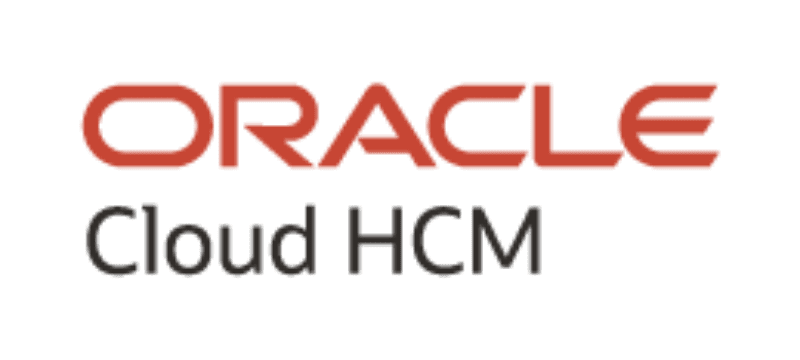Talent Mobility, Recruiting and Productivity in the era of change
Changing employee expectations and new organizational demands have called for a more creative approach to talent mobility.
New workforce dynamics means the scope of HR goes above and beyond just employees on the payroll.
Technologies and systems are getting much better at understanding and working with the fluid nature of work.




The outbreak of the coronavirus pandemic has shone a light on the importance of people in driving business success, and as organizations look to realign themselves in the era of change, it is no surprise that talent is at the top of most business agendas. Organizations globally must find ways to ensure their workforce is resilient and ready for new purposes and goals.
Whether it is rapidly hiring to fill front-line needs, or looking within and leveraging internal talent, HR needs greater talent awareness, access, and acquisition efficiency. The pressure for speed and agility on talent and recruitment teams has never been so great.
So how are some of today’s leading organizations leveraging technology to make sure they have the right people ready for new roles? And how are they enhancing internal and external collaboration so people can reach their full potential?
This was the topic of discussion in an UNLEASH webinar held in partnership with Oracle HCM Cloud. The session, moderated by Tom Haak, an HR industry influencer and Director of the HR Trend Institute, featured Oracle Cloud Human Capital Cloud (HCM) customers from all over the world.
Watch this webinar on-demand to hear discussions on these key themes:
It’s time to get creative with mobility
Despite the enormous advantage of access to a much wider, diverse talent pool, many HR teams are still facing a lot of resistance from management when it comes to hiring from further afield. Mauro Ghilardi, Director of People and Transformation at A2A Group, a leading energy solutions company, said this was due to management still wanting control and the ability to bring someone into the office at a moment’s notice, without significant cost.
“Once we are able to establish a new way to operate, we will be much clearer [in terms of] how many days or weeks people have to stay in the office. We will then be able to engineer if we can really have talent like Sarah in Edinburgh or Jérôme in Dubai, working for us as an Italy-based company,” Ghilardi said.
Jérôme de Mallmann, Vice President Performance, Productivity, and Group People Department at DP World, a multinational logistics company based in Dubai, has noticed a massive shift in candidate expectations with questions such as ‘If I want to live in X but work in X, how often do I have to come to work?’ becoming increasingly frequent.
De Mallmann noticed the shift to remote working had caused noticeable increase in productivity at DP World. This has led to greater investment in creative talent mobility solutions that embrace the virtual world.
“We are trying to increase virtual mobility, which means that instead of having somebody relocating to somewhere else, which is always a painful, time-consuming process, we keep people where they are but engage them in some other activities and not necessarily a full-time job,” said de Mallmann.
For context, Oracle’s new product called ‘Opportunity Marketplace,’ is an internal gigs marketplace for employees to find internal job postings as well as volunteer opportunities and other new projects they can get involved with. This gives internal employees the opportunity to participate in international projects from other departments and facilitates a sense of internal mobility.
Redefining the scope of HR
The coronavirus pandemic has undoubtfully catalyzed a much-needed revision of the scope of HR. No longer are HR’s responsibilities limited to managing people on the payroll but instead organizations are adopting a much broader perspective, which can adapt in the era of change.
Sarah Henry, Vice President of HR Transformation at Oracle has observed that when talking to employees’ conversations are becoming increasingly focused on coping with contingent workers or workers that are on the payroll but are also freelancers.
“The boundary of HR is no longer your permanent employees; your talent pool grows exponentially outside your internal employees,” Henry said.
“Payment is almost the easy bit. There are far bigger questions around how you manage performance and other talent management processes,” she added.
Contingent workers have different expectations, wants, and needs to permanent ones. They don’t want to be tied down by one particular job but instead want multiple projects going on at the same time — this is key for them to have an interesting and diverse career. But with so many new types of workers entering the workforce, the line between ‘external’ and ‘internal’ talent is blurrier than ever.
Digital transformation in HR
The changing scope of HR has brought technology providers like Oracle Cloud HCM to the fore, and systems are getting a lot better at understanding the fluid nature of people and work.
De Mallmann spoke about how technology has enabled his company to get rid of a lot of non-value add tasks. While at first there was apprehension over making people feeling insecure or threatened in their roles, he said the exact opposite had actually happened.
“People have had to work less as they become more efficient, leaving more room for tasks that are interesting, which links to motivation and a sense of purpose we are all looking for,” de Mallmann said.
Ghilardi explained how on top of driving productivity and efficiency, one of the biggest benefits of digital transformation is the ability to analyze employee data and make better predictions about future behaviors. However, with this ability, Ghilardi also mentioned there was an ethical concern over how companies should collect and use employee data.
The role of HR
“So, what does all of this mean for HR and how is the role changing?” Tom asked the panel as they wrapped up the discussion.
“Rather than changing, it is just becoming more important,” Henry said. “Every HR [team] does operating models in different ways but what I am seeing is that people did not stop investing in HR tech projects because of COVID, if anything they increased it.”
If organizations have learnt anything over the last 12 months, it is that they have a responsibility to look after their employees and to build flexibility and resilience into their workforce.
“HR is going up to the top,” Henry commented. “As focus becomes greater, the function will need to grow, becoming more intrinsically important in organizations,” she added.
De Mallmann echoed Henry’s comments, noting how it is now in the hands of HR teams to decide how they now want to be involved. Technology developments and the changing nature of how work is perceived has thrust HR into another dimension.
“It’s all about how HR wants to position itself and take the opportunity to be a greater part of the business team,” said de Mallmann. “It’s about where we want to position the curser, not about fighting to get the seat.”
